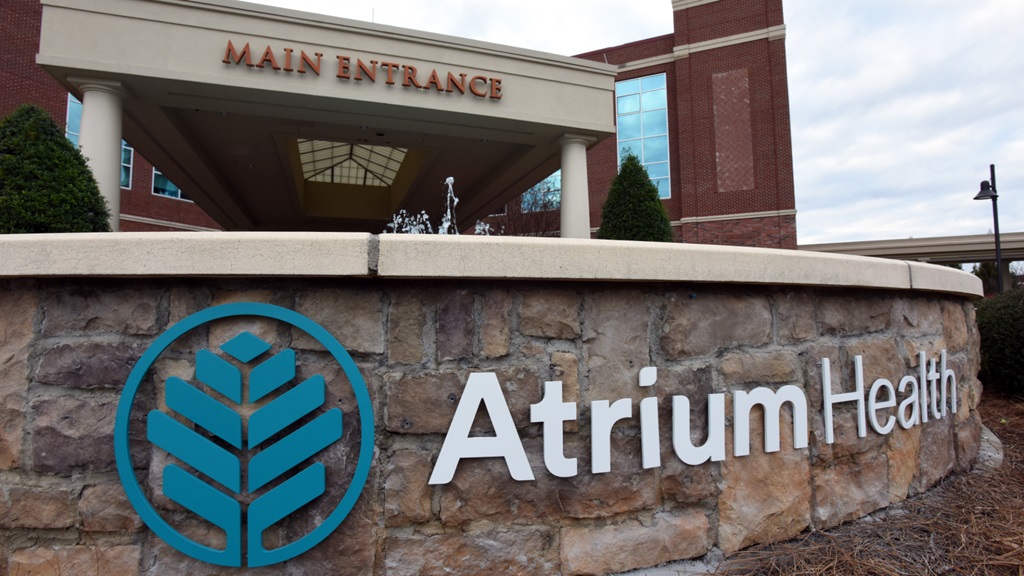The original Lincoln County Hospital, which first opened in 1969, signed a management services agreement with Carolinas HealthCare System in 2000, and officially became part of the health system family in 2006. Since then, the improvements in both financial stability and available services have been extraordinary.
Pete Acker has served as president at Atrium Health Lincoln since 1995. He says the on-site availability of Atrium Health's Levine Cancer Institute clinicians is just one of many game-changing enhancements that have occurred as a result of the hospital’s affiliation.
“Our patients can see the same oncologists in Lincolnton that they used to have to see in Charlotte,” he says. “This access to the very best of specialists has given our constituents tremendous confidence that they no longer have to travel for top-quality care.”
Among Acker’s achievements is his role overseeing the physical move from an obsolescent building to a new, state-of-the-art hospital in July 2010. He cites two things that were particularly significant about the changeover.
First, Carolinas HealthCare System fully honored its commitment to complete the hospital, despite a severe economic downturn at the time.
Also, several major safety enhancements were incorporated into the new facility’s design. One was electronic medical records. Another was virtual critical care, which enabled on-site treatment of patients who formerly would have required a transfer.
Acker remembers a time when it was indeed difficult to recruit and retain specialists. “When I started here even the physicians we successfully recruited didn’t want to stay.” Acker recalls the physicians were fearful they would not survive economically, so hanging out the Tree of Life logo was a tremendous stabilizer. “Our physicians were more confident. Our employees were more secure. And the local population was much more assured about the hospital’s future as a basic fixture of the community.”
Teresa Crisson, RNC, a recently retired obstetrics nurse, enjoys reminiscing about the changes she observed during a 45-year career at the hospital. She started at Lincoln County Hospital just three years after it opened. While the facility was then state of the art, the medical routines surrounding labor and delivery were radically different from today’s norms.
Crisson says today’s nursing grads would probably be shocked to learn that all babies were delivered by family physicians in the early 1970s. All C-sections were performed by general surgeons, and expectant mothers did not have access to sonograms, fetal monitors or epidurals.
The onset of epidurals, she speculates, may have had a measurable impact on local population growth. “I think that more women were open to having a second child after we introduced that particular medical advance,” she says with a smile.
There are other aspects of 1970s care that would qualify as antiquated today. “We had ash trays placed at the nursing stations for doctors making rounds on our floor,” Crisson remembers.
Looking back, Crisson is most impressed by the safety enhancements she witnessed as a function of new technologies.
“We used to keep all our records on paper,” she says. “The new computerized charting systems are faster, easier and more thorough. The dispensing of medications is much better controlled. Nurses aren’t walking around with pills in mini muffin cups and paper notes that can blow around in the breezes.”
Something that did not change, however, was her own personal bond to her nursing colleagues in OB and even to the old hospital itself. “On the day of the move in 2010, our team had to split up between the two hospitals. People were literally being cared for at both locations, while we loaded beds into trucks and patients into ambulances.
“I was the last to leave, and it fell to me to turn the lights out. It was very emotional, because the old hospital had become my second home.”
Crisson harbors no regrets, however, about staying in the same unit for 45 years. “A hospital by definition is a destination for the very sickest of patients,” she says. “But when you’re delivering babies, it’s quite a happy place almost all the time. Because of that, I never really wanted to be anywhere else.”
Timeline of Key Events at Atrium Health Lincoln
- 1969: Lincoln County Hospital, a county-owned facility, opens in Lincolnton.
- 1995: The County transfers the hospital to a separate nonprofit corporation known as Lincoln Health System.
- 2000: As a result of ongoing financial problems, Lincoln Health System seeks an outside healthcare organization to assist in managing the hospital. A management services agreement is signed with Carolinas HealthCare System.
- 2006: The hospital operations are transferred to Carolinas HealthCare System and the hospital is renamed Carolinas Medical Center-Lincoln.
- 2010: The hospital operations are moved to a new facility built by Carolinas HealthCare System at 433 McAlister Road in Lincolnton, and Lincoln Health System is merged into Carolinas HealthCare System. The new facility, still named Carolinas Medical Center-Lincoln, has 101 licensed beds. The original hospital building reverts to county ownership for other uses.
- 2014: The hospital is renamed Carolinas HealthCare System Lincoln.
- 2018: Effective December 1, Carolinas HealthCare System Lincoln is renamed Atrium Health Lincoln.



